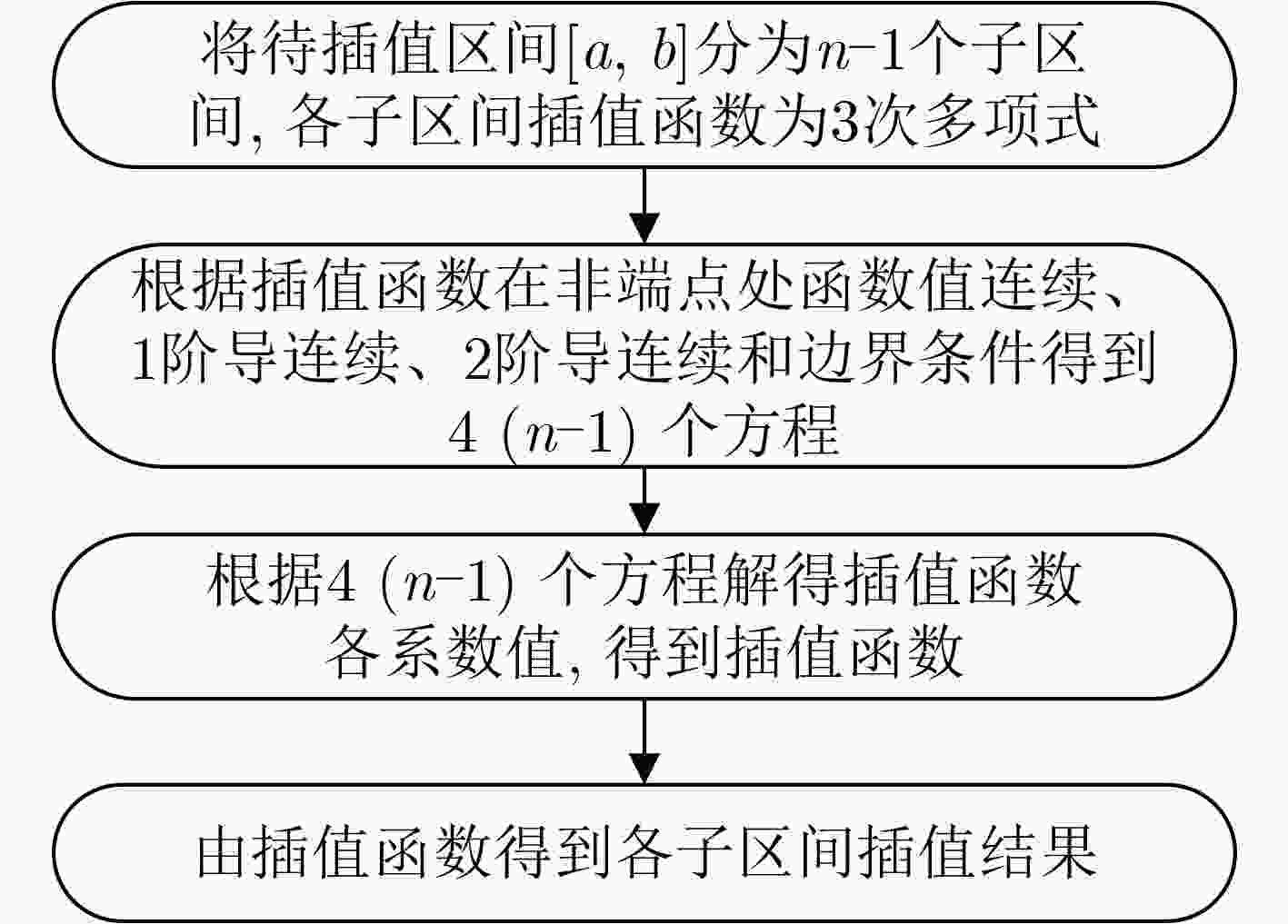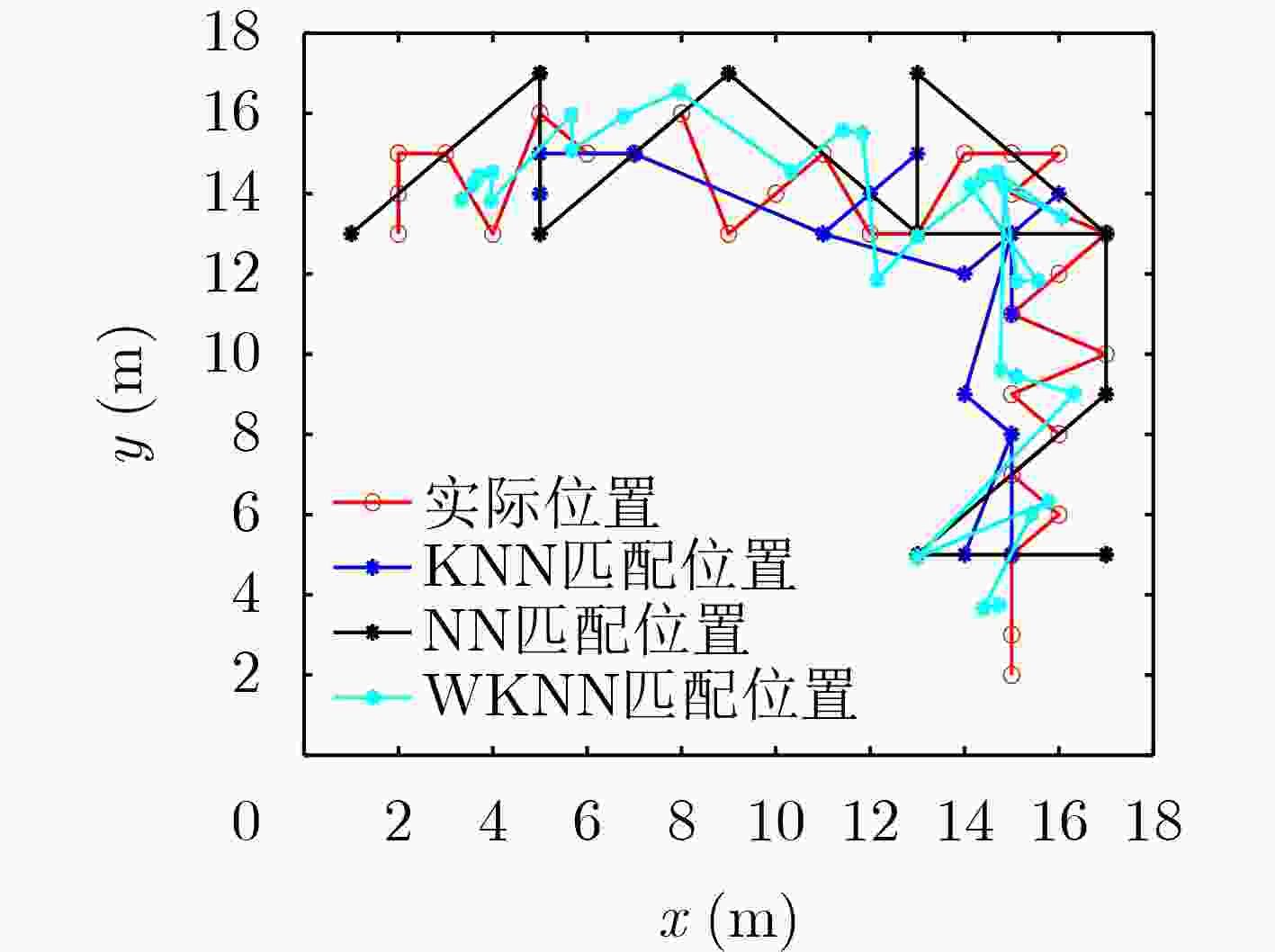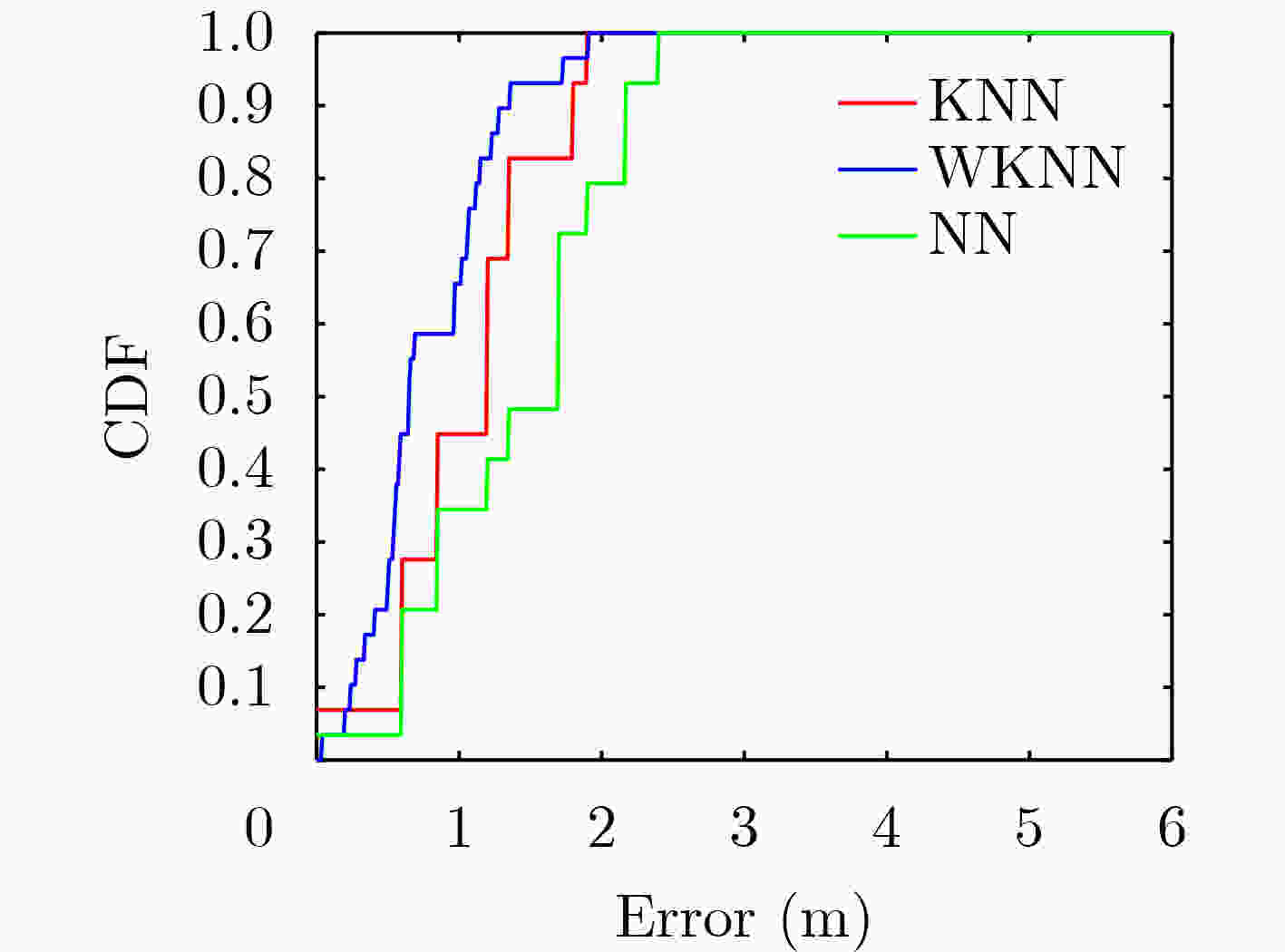Wi-Fi Fingerprint Localization Uniting Spline Interpolation
-
摘要: 该文从降低现有的Wi-Fi室内定位技术算法成本、保证定位精度的角度出发,提出了联合Spline插值的Wi-Fi指纹匹配定位算法。在构建信号强度指纹数据库方面,该文提出了稀疏指纹库的构建,大大降低了数据采集的工作量和硬件需求,并且提出将混合滤波与Spline插值方法结合,对稀疏指纹数据库进行丰富。在信号强度指纹数据库的插值方面,经过相同程度的混合滤波后,与已知的反距离加权(IDW)插值算法相比,联合Spline插值方法能够实现对数据库的精确填充,实现更高的定位精度;在指纹匹配定位方面,采用K最邻近(KNN)等匹配算法实现高精度定位。通过仿真实验证明,该文所提出的联合Spline插值的Wi-Fi的指纹定位方法能够在仅需要构建低成本稀疏指纹数据库的前提下,保证较高的定位精度。Abstract: In order to reduce the cost of the existing Wi-Fi indoor positioning technology algorithm and ensure the positioning accuracy, a Wi-Fi fingerprint matching positioning algorithm uniting Spline interpolation is proposed in this paper. In terms of constructing the signal strength fingerprint database, the construction of a sparse fingerprint database is proposed, which greatly reduces the workload and hardware requirements of data collection. In addition, the combination of hybrid filtering and spline interpolation method is proposed to enrich the sparse fingerprint database. In terms of interpolation of the signal strength fingerprint database, after the same degree of hybrid filtering, compared with the known Inverse Distance Weighting(IDW) interpolation algorithm, the spline interpolation method can accurately fill the database and achieve higher positioning accuracy. In terms of fingerprint matching and positioning, matching algorithms such as K-Nearest Neighbor(KNN) are used to achieve high-precision positioning. Simulation experiments show that the proposed Wi-Fi fingerprint positioning method uniting spline interpolation can ensure high positioning accuracy under the premise of only building a low-cost sparse fingerprint database.
-
Key words:
- Indoor localization /
- Wi-Fi /
- Interpolation
-
表 1 实验定位点的坐标及序号
序号 坐标 序号 坐标 序号 坐标 1 (2,13) 11 (10,14) 21 (15,11) 2 (2,14) 12 (11,15) 22 (17,10) 3 (2,15) 13 (12,13) 23 (15,9) 4 (3,15) 14 (13,13) 24 (16,8) 5 (4,13) 15 (14,15) 25 (15,7) 6 (5,16) 16 (15,15) 26 (16,6) 7 (6,15) 17 (16,15) 27 (15,5) 8 (7,15) 18 (15,14) 28 (15,3) 9 (8,16) 19 (17,13) 29 (15,2) 10 (9,13) 20 (16,12) 表 2 Spline插值前后定位误差(m)
NN KNN WKNN 插值前 1.40 1.06 0.78 插值后 0.91 0.72 0.72 -
[1] LI Binghao, WANG Y, LEE H K, et al. Method for Yielding a Database of Location Fingerprints in WLAN[J]. IEE Proceedings-Communications, 2005, 152(5): 580–586. doi: 10.1049/ip-com:20050078. [2] 朱律, 钱兆琛. 一种改进的基于对数路径损耗模型的WiFi定位方法[J]. 测绘地理信息, 2019, 44(2): 69–70,92. doi: 10.14188/j.2095-6045.2018322.ZHU Lv and QIAN Zhaochen. An improved WiFi location method based on logarithmic path loss model[J]. Journal of Geomatics, 2019, 44(2): 69–70,92. doi: 10.14188/j.2095-6045.2018322. [3] DING Hongwei, ZHENG Zhengqi, and ZHANG Yu. AP weighted multiple matching nearest neighbors approach for fingerprint-based indoor localization[C]. 2016 Fourth International Conference on Ubiquitous Positioning, Indoor Navigation and Location Based Services, Shanghai, China, 2016: 219–221. doi: 10.1109/UPINLBS.2016.7809974. [4] XUE Jianzhe, LIU Junyu, SHENG Min, et al. A WiFi fingerprint based high-adaptability indoor localization via machine learning[J]. China Communications, 2020, 17(7): 247–259. doi: 10.23919/J.CC.2020.07.018. [5] FAN Heng and CHEN Zhongmin. WiFi based Indoor Localization with multiple kernel learning[C]. The 8th IEEE International Conference on Communication Software and Networks, Beijing, China, 2016: 474–477. doi: 10.1109/ICCSN.2016.7587204. [6] SINGH N, CHOE S, and PUNMIYA R. Machine learning based indoor localization using Wi-Fi RSSI fingerprints: An overview[J]. IEEE Access, 2021, 9: 127150–127174. doi: 10.1109/ACCESS.2021.3111083. [7] CHEN Lina, LI Binghao, ZHAO Kai, et al. An improved algorithm to generate a Wi-Fi fingerprint database for indoor positioning[J]. Sensors, 2013, 13(8): 11085–11096. doi: 10.3390/s130811085. [8] GUO Di, QU Xiaobo, HUANG Lianfen, et al. Sparsity-based spatial interpolation in wireless sensor networks[J]. Sensors, 2011, 11(3): 2385–2407. doi: 10.3390/s110302385. [9] 李国逢, 李雷, 郑志浩, 等. 一种基于GM(1, 1)模型和IDW插值的指纹库优化算法[C]. 第十二届中国卫星导航年会论文集——S09 用户终端技术, 南昌, 2021: 50–56.LI Guofeng, LI Lei, ZHENG Zhihao, et al. A fingerprint database optimization algorithm based on GM (1, 1) model and IDW interpolation[C]. The Twelfth China Satellite Navigation Conference, Nanchang, China, 2021: 50–56. [10] TALVITIE J, RENFORS M, and LOHAN E S. Distance-based interpolation and extrapolation methods for RSS-based localization with indoor wireless signals[J]. IEEE Transactions on Vehicular Technology, 2015, 64(4): 1340–1353. doi: 10.1109/TVT.2015.2397598. [11] 潘承洞. Spline函数的理论及其应用(一)[J]. 数学的实践与认识, 1975(3): 64–75.PAN Chengdong. Spline function in theory and application (一)[J]. Mathematics in Practice and Theory, 1975(3): 64–75. [12] 周坤, 陈文杰, 陈伟海, 等. 基于三次样条插值的扩展谱减语音增强算法[J]. 北京航空航天大学学报, 2023, 49(10): 2826–2834. doi: 10.13700/j.bh.1001-5965.2021.0744.ZHOU Kun, CHEN Wenjie, CHEN Weihai, et al. Extended subtraction speech enhancement based on cubic spline interpolation[J]. Journal of Beijing University of Aeronautics and Astronautics, 2023, 49(10): 2826–2834. doi: 10.13700/j.bh.1001-5965.2021.0744. [13] FARIZ N, JAMIL N, and DIN M. An improved indoor location technique using Kalman filtering on RSSI[J]. Journal of Computational and Theoretical Nanoscience, 2018, 24(3): 1591–1598. doi: 10.1166/asl.2018.11116. [14] 陈思敏. 基于位置指纹识别的WiFi室内定位算法研究与实现[D]. [硕士论文], 南京邮电大学, 2016.CHEN Simin. The research and implementation of WiFi indoor location algorithm based on location fingerprint recognition[D]. [Master dissertation], Nanjing University of Posts and Telecommunications, 2016. [15] 郭昕刚, 李航, 宫鸿. 基于边界过滤和邻域均值滤波的室内定位算法[J]. 长春工业大学学报, 2017, 38(5): 426–432. doi: 10.15923/j.cnki.cn22-1382/t.2017.5.03.GUO Xingang, LI Hang, and GONG Hong. Indoor location algorithm based on boundary filter and neighborhood mean filter[J]. Journal of Changchun University of Technology, 2017, 38(5): 426–432. doi: 10.15923/j.cnki.cn22-1382/t.2017.5.03. -






 下载:
下载:















 下载:
下载:
